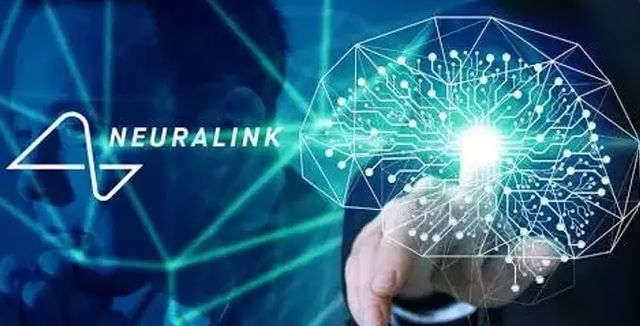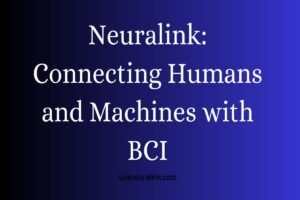Neuralink’s Approach to Chronic Pain Management
Chronic pain is a pervasive and debilitating condition affecting millions of people worldwide. Often resistant to conventional treatments, it leaves patients grappling with persistent discomfort that disrupts their quality of life. Traditional approaches—such as medications, physical therapy, and surgical interventions—sometimes fall short, offering incomplete relief while introducing risks like side effects or dependency. Enter Neuralink, a pioneering neurotechnology company that could revolutionize how we understand and manage chronic pain. By leveraging brain-computer interfaces (BCIs), Neuralink aims to address this complex issue at its neurological roots, offering hope where other methods have faltered.
Understanding Chronic Pain: A Neurological Puzzle
To appreciate Neuralink’s approach, it’s essential to first understand chronic pain itself. Unlike acute pain, which serves as a temporary warning signal of injury or illness, chronic pain persists beyond the normal healing period—typically defined as lasting more than three months. Conditions like fibromyalgia, neuropathy, arthritis, and lower back pain are common culprits, but the experience of chronic pain varies widely among individuals. What unites these cases is the brain’s central role in processing and perpetuating pain signals.
Pain perception begins with nociceptors—specialized nerve endings that detect harmful stimuli. These signals travel through the spinal cord to the brain, where they’re interpreted as pain. In chronic pain, however, this system can malfunction. The brain and nervous system may become hypersensitive, amplifying pain signals or even generating them in the absence of an external trigger—a phenomenon known as neuropathic pain. This neurological misfiring is why chronic pain is so challenging to treat: it’s not just a symptom but a condition rooted in the brain’s wiring.
Neuralink’s Vision: Rewiring the Brain
Founded by Elon Musk in 2016, Neuralink is developing advanced brain-computer interface technology to bridge the gap between the human brain and external devices. While the company’s long-term goals include enhancing cognitive abilities and merging human intelligence with artificial intelligence, its near-term applications—such as treating neurological disorders—are equally groundbreaking. Chronic pain management is one area where Neuralink’s technology could make a transformative difference.
At its core, Neuralink’s system involves implanting tiny, flexible electrodes into specific regions of the brain. These electrodes, thinner than a human hair, are designed to record and stimulate neural activity with unprecedented precision. Connected to a small, wearable device behind the ear, the system can process brain signals in real time and interface with external software. This bidirectional communication—reading from and writing to the brain—sets Neuralink apart from earlier BCIs and opens the door to innovative pain management strategies.
How Neuralink Could Target Chronic Pain
So, how might Neuralink tackle chronic pain? The answer lies in its ability to interact directly with the brain’s pain-processing centers. Several key mechanisms could come into play:
- Interrupting Pain Signals: By identifying and targeting overactive neural pathways responsible for chronic pain, Neuralink’s electrodes could modulate or suppress these signals before they’re perceived as discomfort. For instance, stimulating inhibitory neurons in areas like the thalamus or prefrontal cortex might dampen the brain’s pain response, offering immediate relief.
- Restoring Balance: Chronic pain often involves a dysregulation of the nervous system, where pain circuits become stuck in a feedback loop. Neuralink could deliver precise electrical pulses to recalibrate these circuits, restoring normal function. This approach mirrors deep brain stimulation (DBS), a technique already used for conditions like Parkinson’s disease, but with far greater accuracy thanks to Neuralink’s high-density electrode arrays.
- Personalized Pain Mapping: Every patient’s pain is unique, shaped by their brain’s specific wiring. Neuralink’s ability to record neural activity could allow doctors to create individualized “pain maps,” pinpointing the exact regions driving a patient’s discomfort. This data-driven approach could lead to tailored interventions, maximizing efficacy while minimizing side effects.
- Reducing Reliance on Drugs: Opioids and other painkillers carry risks of addiction and tolerance, often leaving patients in a vicious cycle. By addressing pain at its neurological source, Neuralink could reduce or eliminate the need for systemic medications, offering a safer, more sustainable solution.
The Science Behind the Promise
Neuralink’s approach builds on decades of neuroscience research. Studies have shown that electrical stimulation of specific brain regions can alter pain perception. For example, DBS targeting the periaqueductal gray (PAG)—a region involved in pain modulation—has been used successfully in small cohorts of chronic pain patients. Similarly, transcranial magnetic stimulation (TMS), a non-invasive technique, has demonstrated modest pain relief by influencing cortical activity. Neuralink takes these concepts to the next level with its invasive, high-resolution technology, which promises greater precision and control.
Animal studies conducted by Neuralink have already showcased the potential of its BCI system. In 2021, the company released a video of a monkey playing a video game using only its thoughts, thanks to Neuralink’s implanted electrodes. While this demonstration focused on motor control, it hints at the system’s ability to decode and manipulate complex neural signals—skills that could easily translate to pain management.
Current Progress and Challenges
As of March 13, 2025, Neuralink has made significant strides. In 2024, the company received FDA approval to begin human clinical trials for its first-generation implant, named “Telepathy.” Initial trials have focused on patients with severe neurological conditions like quadriplegia, but chronic pain is a logical next frontier. Early reports suggest that Neuralink’s implants are safe and capable of recording brain activity with remarkable fidelity, laying the groundwork for therapeutic applications.
However, challenges remain. Implanting electrodes in the brain is a delicate procedure, and long-term safety—such as avoiding inflammation or device degradation—must be rigorously tested. Ethical questions also arise: How will access to this technology be regulated, and who will benefit? Moreover, chronic pain’s subjective nature means that success will depend on patients’ self-reported experiences, complicating clinical validation.
The Future of Pain Management with Neuralink
Looking ahead, Neuralink’s impact on chronic pain could extend beyond symptom relief. Imagine a future where the system not only blocks pain but also helps patients regain control over their emotional response to it. The brain’s limbic system, which governs emotions, often amplifies chronic pain through stress and anxiety. By modulating these circuits, Neuralink might offer a holistic solution that addresses both the physical and psychological dimensions of pain.
Integration with artificial intelligence could further enhance the technology. Machine learning algorithms, trained on vast datasets of neural activity, could predict pain flare-ups and adjust stimulation in real time, creating a dynamic, adaptive treatment. Patients might even use a smartphone app to fine-tune their settings, empowering them to manage their condition with unprecedented autonomy.
A New Hope for Millions
For the 50 million Americans—and countless others worldwide—living with chronic pain, Neuralink represents a beacon of hope. While the technology is still in its early stages, its potential to transform lives is undeniable. Unlike pills or surgeries that treat symptoms superficially, Neuralink dives into the brain’s inner workings, offering a fundamentally new way to combat an age-old problem.
As Neuralink continues its research and trials, the dream of a pain-free future inches closer to reality. The road ahead will require collaboration between neuroscientists, engineers, and medical professionals, as well as input from patients themselves. But if successful, Neuralink could redefine chronic pain management, proving that even the most stubborn human challenges can be met with innovation and ingenuity.
Share this content:























Post Comment